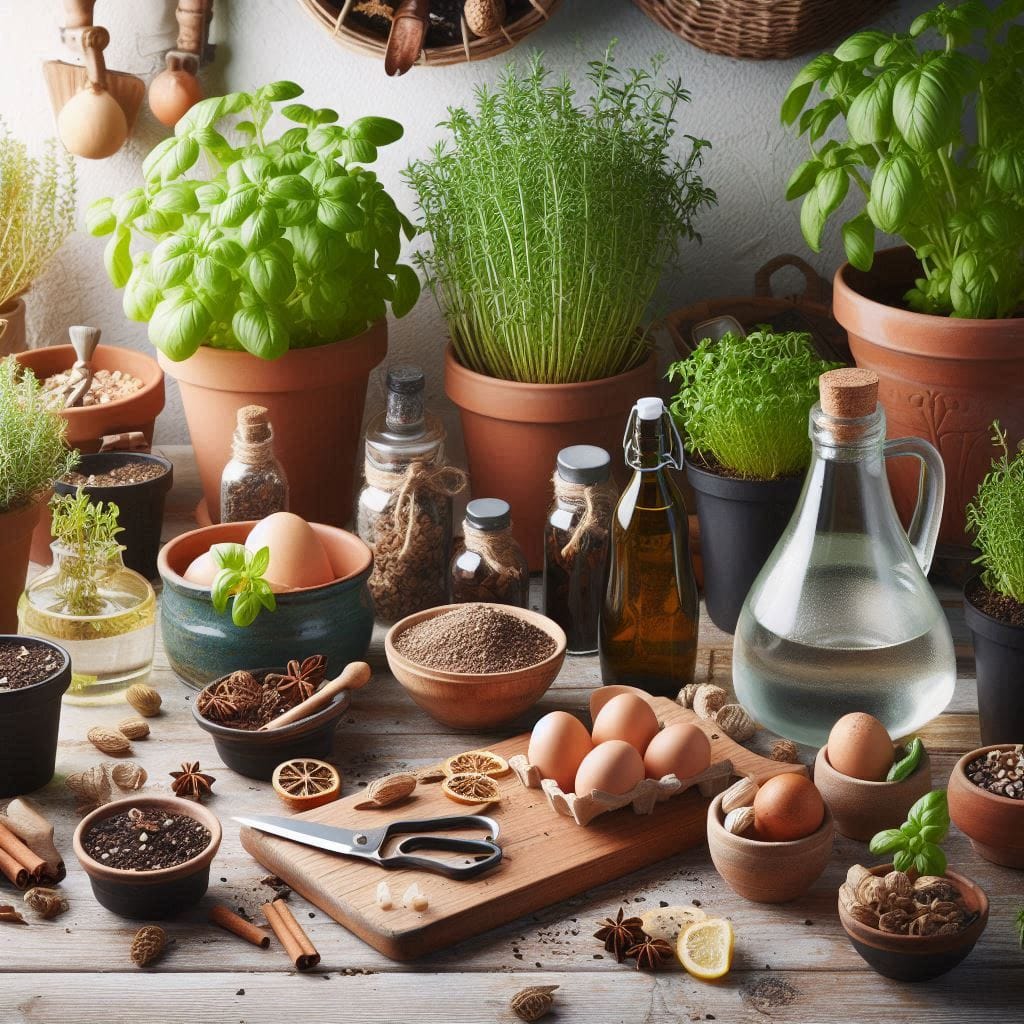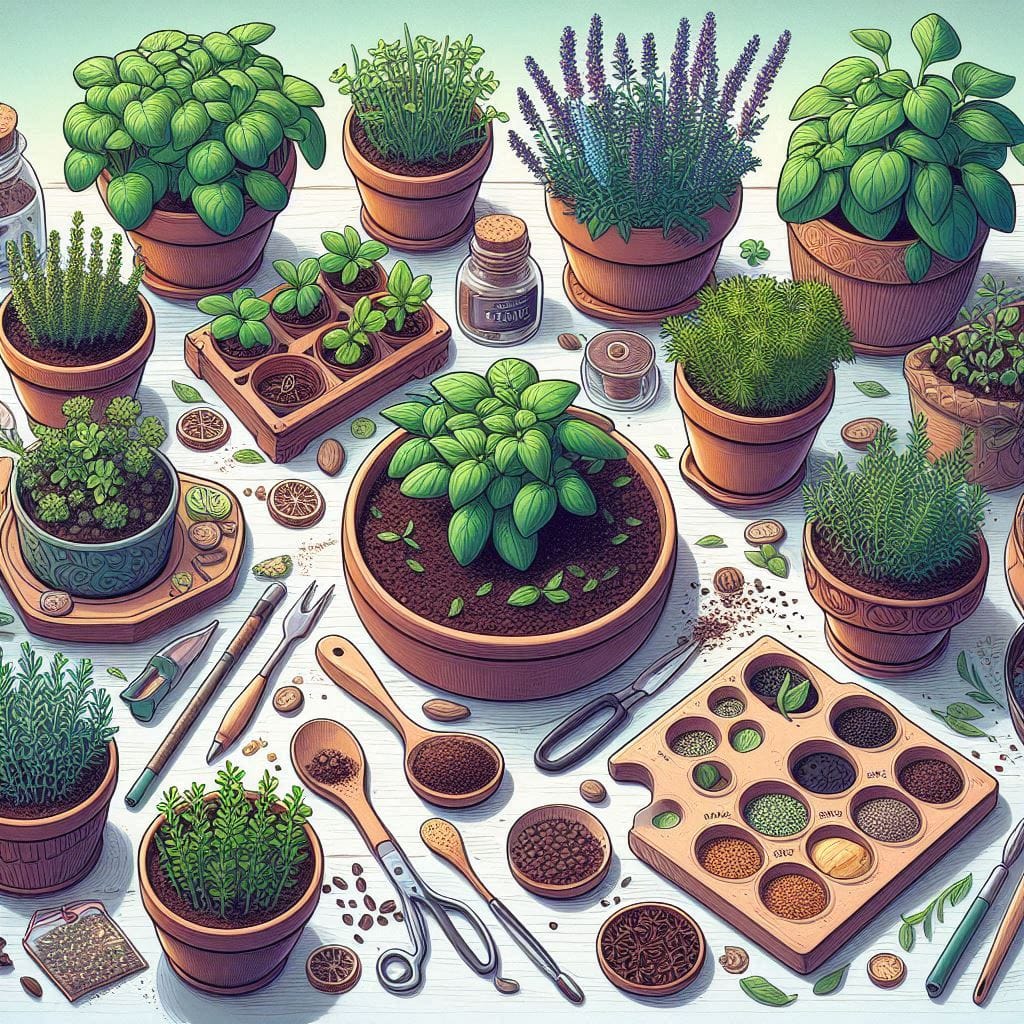Table of Contents
Starting an indoor herb garden is a fun and easy way to have fresh herbs at your fingertips all year round. Whether you’re a beginner or an experienced gardener, growing herbs indoors can be a rewarding hobby. This guide will walk you through choosing the right herbs, gathering the necessary supplies, planting, and maintaining your indoor herb garden.
Key Takeaways
- Choose herbs that are easy to grow indoors, like basil, mint, and parsley.
- Use containers with good drainage to prevent water from sitting at the bottom.
- Place your herb garden in a spot where it will get plenty of sunlight, like a windowsill.
- Water your herbs regularly but be careful not to overwater them.
- Prune your herbs often to encourage growth and prevent them from becoming too leggy.
Choosing the Right Herbs for Your Indoor Garden

Best Herbs for Beginners
Starting an indoor herb garden can be fun and easy if you pick the right herbs. Basil, mint, and parsley are great choices for beginners because they grow quickly and are easy to care for. These herbs are also commonly used in many recipes, making them practical and enjoyable to grow.
Herbs That Thrive Indoors
Some herbs do better indoors than others. Herbs like thyme, chives, and cilantro thrive in indoor environments. They don’t need a lot of space and can grow well in containers. These herbs also add a lot of flavor to your dishes, making them a great addition to your indoor garden.
Herbs to Avoid
Not all herbs are suited for indoor gardening. Some, like dill and fennel, require more space and sunlight than an indoor setting can provide. It’s best to avoid these herbs to ensure your indoor garden is successful.
Picking the right herbs is the first step to a thriving indoor herb garden. Choose wisely to enjoy fresh, flavorful herbs all year round.
Essential Supplies for Your Indoor Herb Garden

Selecting the Right Containers
Choosing the right containers is crucial for your indoor herb garden. Make sure the containers have drainage holes to prevent water from accumulating at the bottom, which can cause root rot. You can use pots made of plastic, clay, or ceramic, but ensure they are the right size for the herbs you plan to grow.
Choosing Quality Soil
The soil you use can make or break your indoor herb garden. Opt for a high-quality potting mix that is light and well-draining. Avoid using garden soil as it can be too heavy and may contain pests or diseases. A good potting mix will provide the necessary nutrients and support for your herbs to thrive.
Importance of Proper Drainage
Proper drainage is essential to keep your herbs healthy. Without it, water can accumulate at the bottom of the container, leading to root rot and other issues. Ensure your pots have drainage holes and consider placing a layer of small stones or gravel at the bottom to improve drainage. This simple step can make a big difference in the health of your indoor herb garden.
Remember, the right supplies can set the foundation for a thriving indoor herb garden. Take the time to choose quality materials, and your herbs will thank you!
Step-by-Step Guide to Planting Your Indoor Herb Garden

Preparing Your Containers
Before you start planting, make sure your containers are ready. Choose pots with drainage holes to prevent water from pooling at the bottom. This helps keep your herbs healthy. If your pots don’t have drainage holes, you can add a layer of small rocks or pebbles at the bottom to help with drainage.
Planting Seeds vs. Transplants
You can start your herb garden with seeds or transplants. Seeds are cheaper but take longer to grow. Transplants are young plants that give you a head start. If you’re new to gardening, transplants might be easier to manage.
Watering and Light Requirements
Herbs need the right amount of water and light to thrive. Most herbs prefer bright, indirect light. Place your garden near a sunny window. Water your herbs when the top inch of soil feels dry. Be careful not to overwater, as this can harm the plants.
Remember, the key to a successful indoor herb garden is consistency. Regular care and attention will help your herbs grow strong and healthy.
Maintaining and Caring for Your Indoor Herb Garden

Pruning and Harvesting Tips
Regular pruning is essential to keep your herbs healthy and encourage new growth. Trim your herbs frequently to prevent them from becoming leggy and to promote bushier plants. When harvesting, use sharp scissors or pruning shears to avoid damaging the plant. Always leave enough foliage so the plant can continue to photosynthesize and grow.
Dealing with Common Pests
Indoor herb gardens can still attract pests like aphids, spider mites, and whiteflies. To manage these pests, inspect your plants regularly and remove any affected leaves. You can also use natural remedies like neem oil or insecticidal soap. If an infestation occurs, isolate the affected plant to prevent the pests from spreading.
Ensuring Adequate Light and Water
Herbs need plenty of light to thrive. Place your garden near a sunny window or use grow lights if natural light is insufficient. Water your herbs when the top inch of soil feels dry, but be careful not to overwater. Proper drainage is crucial to prevent root rot. Consistent care will keep your herbs healthy and productive.
Remember, prevention is key! Consistent care, proper light, and a watchful eye will keep your green friends thriving.
Creative Ideas for Displaying Your Indoor Herb Garden

Vertical Gardens
Your indoor herb garden isn’t limited to just your windowsill! Consider vertical gardening using hanging planters or tiered shelves to maximize space. This method not only saves space but also adds a unique visual appeal to your home. Vertical gardens are perfect for small apartments or homes with limited space.
Windowsill Arrangements
If you have an extra-wide window ledge or a sunny windowsill, create an herb garden planter to grow several types of herbs together. Growing herbs in a larger container is easier than individual pots because the soil won’t dry out as quickly. This setup keeps fresh ingredients right at hand and enhances your kitchen’s look.
Using Decorative Pots
Using decorative pots can add a touch of style to your indoor herb garden. Choose pots that match your home decor or go for a mix-and-match approach for a more eclectic look. You can even label each pot with the herb’s name for a personal touch. The possibilities for designing and maintaining your indoor herb garden are endless!
Conclusion
Starting an indoor herb garden is a fun and rewarding way to bring fresh herbs into your home. By following the steps in this guide, you’ll be able to grow your own herbs and enjoy their flavors in your cooking. Whether you’re a beginner or have some gardening experience, this guide has everything you need to get started. Happy gardening!
Frequently Asked Questions
What are the easiest herbs to grow indoors?
Some of the easiest herbs to grow indoors are basil, mint, parsley, and chives. These herbs are quite hardy and don’t need a lot of special care.
How much light do indoor herbs need?
Most indoor herbs need about 6 hours of sunlight each day. If you don’t have a sunny spot, you can use grow lights to help them thrive.
Can I grow herbs indoors all year round?
Yes, you can grow herbs indoors all year round. Just make sure they get enough light and water, and keep them in a spot where the temperature stays fairly constant.
What type of soil is best for indoor herbs?
A good quality potting mix that drains well is best for indoor herbs. You can also add some perlite or sand to improve drainage.
How often should I water my indoor herb garden?
Water your indoor herbs when the top inch of soil feels dry. Be careful not to overwater, as this can cause root rot.
Do I need to fertilize my indoor herbs?
Yes, it’s a good idea to fertilize your indoor herbs every few weeks. Use a balanced, water-soluble fertilizer to give them the nutrients they need to grow strong and healthy.





